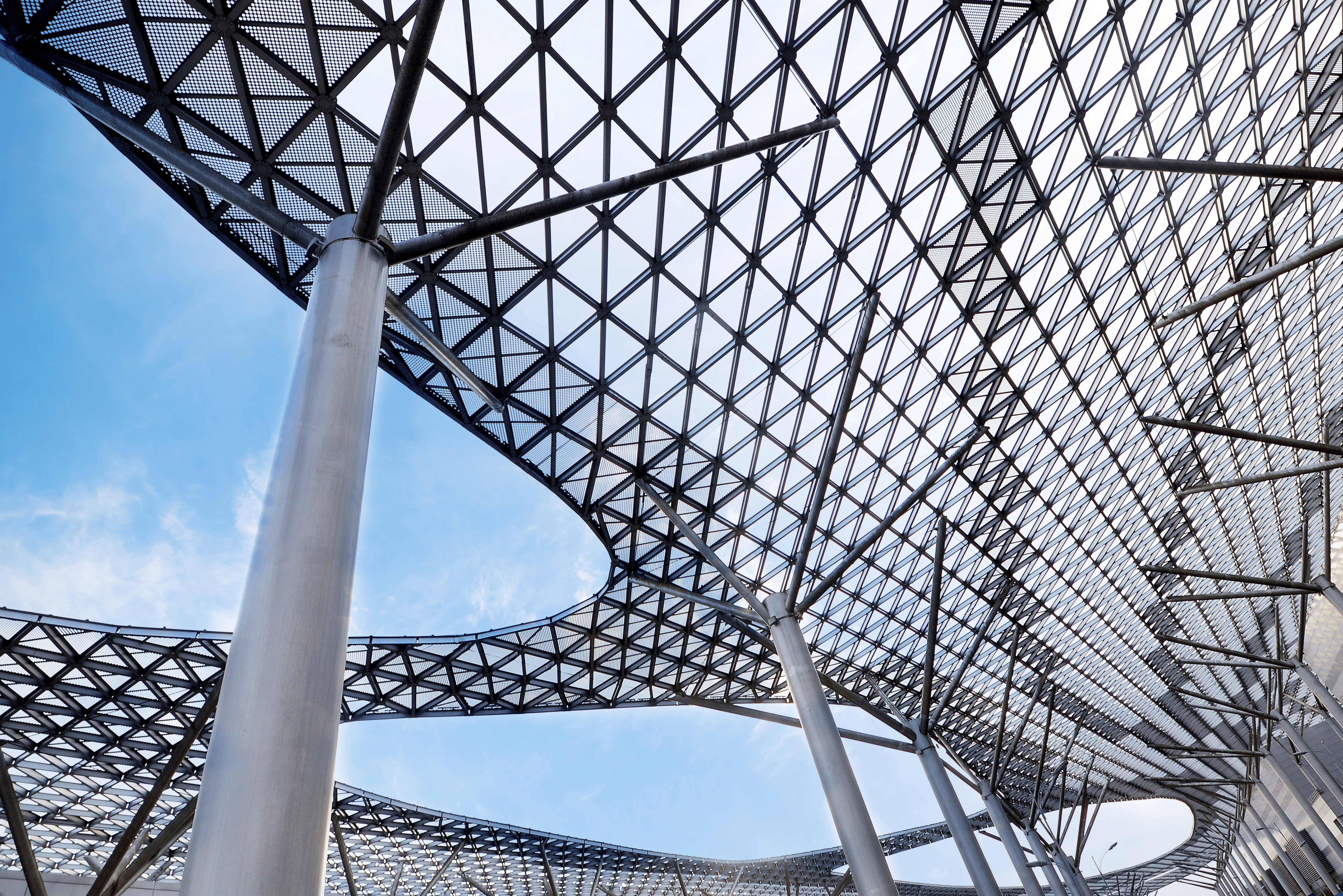Modern civilization relies heavily on strong, durable, and flexible infrastructure. From towering skyscrapers and long-span bridges to communication towers, steel has emerged as the material of choice. Its journey began during the Industrial Revolution in the 19th century, when the Bessemer process made steel production faster and more economical.
Steel quickly proved superior to iron and timber due to its ability to withstand heavy loads, resist environmental stresses, and adapt to complex architectural designs. Today, no modern city skyline or advanced transport network can be imagined without the steel backbone supporting it.
Importance: Why Steel Matters in Modern Infrastructure
Steel is not just a building material; it is the foundation of global progress. Its importance lies in several factors:
-
Strength and Durability – Steel can bear immense weight and resist both compression and tension, making it essential for bridges, towers, and skyscrapers.
-
Flexibility in Design – Modern architecture, with its sweeping curves and daring heights, is possible because of steel’s versatility.
-
Safety in Natural Disasters – Earthquake-resistant skyscrapers and wind-resistant bridges often rely on steel reinforcement.
-
Longevity and Sustainability – Steel structures can last decades, and steel is 100% recyclable, contributing to eco-friendly development.
Who Benefits?
-
Engineers and Architects – They depend on steel to design safe, efficient, and aesthetically pleasing structures.
-
Governments and Urban Planners – Steel supports infrastructure expansion to handle growing populations.
-
Communities and Travelers – Everyday use of bridges, skyscrapers, and towers is only possible due to steel’s strength and reliability.
Recent Updates: Emerging Trends in Steel Construction (2023–2024)
The global steel industry is undergoing important transitions that directly affect infrastructure projects.
-
Green Steel Movement (2023–2024)
-
Countries like Sweden, Germany, and India are adopting hydrogen-based steel production to reduce carbon emissions.
-
In July 2023, ArcelorMittal announced its pilot projects for low-carbon steel for construction.
-
-
High-Performance Steels
-
New alloys such as weathering steel and high-strength low-alloy (HSLA) steel are being used in bridges and towers for better resistance against rust and extreme weather.
-
-
Smart Skyscrapers
-
In 2024, engineers are integrating steel frames with smart sensors that monitor stress, vibrations, and temperature changes in real time.
-
-
Mega Projects in Focus
-
India’s Chenab Bridge, the world’s highest railway bridge completed in 2022, heavily used steel in its arch design.
-
The Jeddah Tower in Saudi Arabia, once completed, will be the tallest skyscraper in the world (over 1 km), relying primarily on steel reinforcement.
-
Laws and Policies: Regulation of Steel in Infrastructure
The use of steel in construction is guided by national standards, safety codes, and government initiatives.
-
Building Codes
-
The American Institute of Steel Construction (AISC) provides structural steel design codes in the U.S.
-
Eurocode 3 governs steel structure design across European countries.
-
Indian Standard IS 800 specifies rules for general steel construction.
-
-
Sustainability Regulations
-
Many governments now mandate the use of recyclable materials in major projects.
-
The European Union’s Green Deal 2023 emphasizes reduced carbon emissions in steel production.
-
-
Safety Policies
-
Skyscrapers and towers must comply with fire resistance laws, requiring the use of fireproof coatings on steel beams.
-
Bridges are required to pass stress testing and inspection cycles, where steel integrity is closely checked.
-
Government Programs Supporting Steel Use:
-
U.S. Infrastructure Investment and Jobs Act (2021–2026) funds steel-heavy projects like highways and bridges.
-
India’s National Steel Policy (2017, updated 2022) promotes domestic steel use in public infrastructure.
-
China’s 14th Five-Year Plan (2021–2025) focuses on advanced steel for mega projects and smart cities.
Tools and Resources for Professionals
Professionals working with steel-based infrastructure often rely on digital tools, design platforms, and data resources:
| Tool/Resource | Purpose |
|---|---|
| AutoCAD & Tekla Structures | Designing and modeling steel frameworks for bridges and skyscrapers |
| STAAD.Pro | Structural analysis for load-bearing capacity of steel |
| Steel Construction Institute (SCI) | Technical papers, design guides, and case studies |
| World Steel Association | Data, trends, and sustainability reports |
| Carbon Footprint Calculators | Assessing environmental impact of steel usage |
Other resources include:
-
AISC Steel Solutions Center – Free technical assistance for engineers.
-
OpenSees Software – For seismic analysis of steel structures.
-
Material Property Databases (MatWeb, CES EduPack) – For comparing steel grades.
FAQs: Common Questions About Steel in Major Structures
Q1. Why is steel preferred over concrete alone for skyscrapers?
Concrete is excellent in compression but weak in tension. Steel, when combined with concrete, provides both tensile and compressive strength, allowing skyscrapers to reach extreme heights safely.
Q2. How does steel improve bridge safety?
Steel’s flexibility helps bridges withstand dynamic loads, such as heavy traffic, wind, and earthquakes. Suspension bridges, in particular, rely heavily on steel cables.
Q3. Is steel environmentally friendly?
Yes. Steel is 100% recyclable without losing quality. Many modern projects now use recycled steel to reduce carbon emissions.
Q4. What role does steel play in communication towers?
Steel provides the rigid but lightweight framework required for tall transmission towers, ensuring stability against high winds and storms.
Q5. Can steel structures last more than 100 years?
Yes, with proper maintenance and protective coatings against rust and fire, steel-based bridges and towers can last well beyond a century.
Conclusion: Steel as the Silent Backbone of Progress
The role of steel in bridges, towers, and skyscrapers goes far beyond its physical presence. It is the silent backbone that enables cities to expand upward and outward, connecting communities, powering economies, and shaping skylines.
As new alloys, green steel initiatives, and smart monitoring systems emerge, the future of infrastructure will continue to lean on steel for strength and sustainability. Governments, engineers, and communities alike must recognize its value and ensure its responsible, innovative use in the decades to come.
Steel is not just a construction material — it is a symbol of human resilience and ambition, carrying societies toward higher, stronger, and more sustainable horizons.